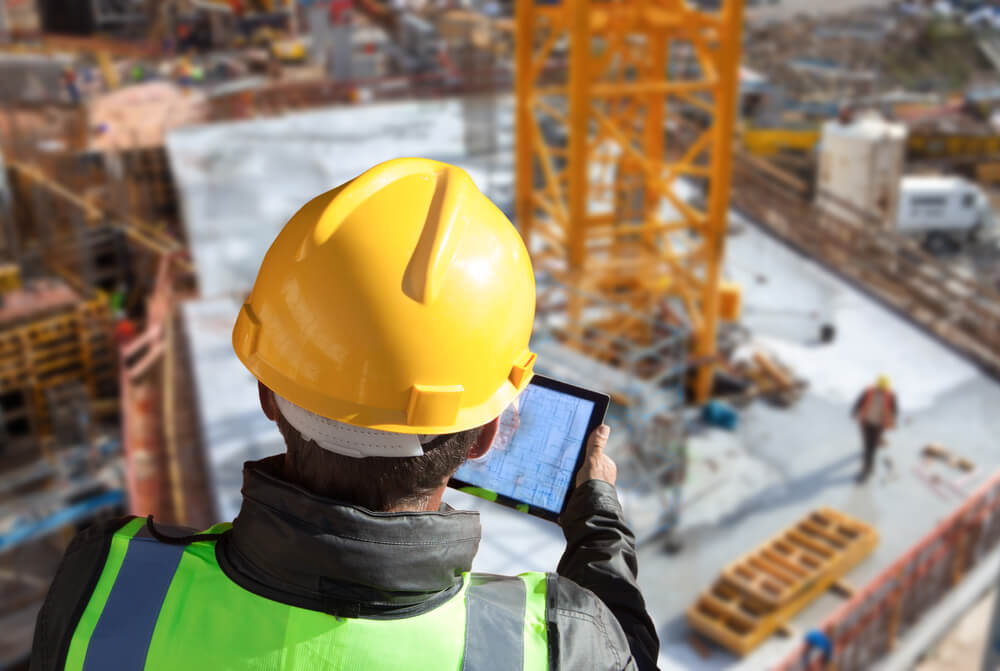

The top construction technology trends to prepare for in 2022
Advancements in technology have always been the cornerstone of the development of the construction industry. Just as every other industry is undergoing a transformation due to the innovation of the digital world, construction is no exception.
As construction demand continues to grow globally, firms must take measures to ensure that they are not left behind. Today, new technologies are being developed at a ground-breaking pace; from drones to AI, the progress has been staggering. Here, we discuss what technology trends we can expect to see in 2022 and how they will change the industry for the better.
Wearable technology
The COVID-19 pandemic had a substantial impact on the safety and security of workers in the construction industry. An emphasis on strict cleanliness and safety protocols brought employee welfare into the spotlight, triggering a range of changes to workplace safety. One area that has seen a great deal of development is in the protective equipment of on-site workers. 2022 is set to see a rise in the use of technology in wearable equipment, minimising a number of prominent workplace threats.
For instance, wearable exoskeletons have been developed for use as an aid for workers’ physical support during tasks where there is a risk of injury. This brilliant piece of technology can make strenuous tasks easier on the joints and limbs and drastically improve safety on the construction site. In 2022, construction workers will also see a technological advancement with their work boots with fantastic features such as pressure detection, location monitor and the ability to alert authorities when you have fallen over.
The future of safe construction involves powerful wearable technology and each of these will provide different tools that will dramatically improve the industry.
Autonomous heavy equipment
Recent advances in technology have made autonomous heavy machinery a practical option for construction teams and 2022 will see a large-scale movement in this area. The autonomous equipment trend is on the rise with the market expected to reach a value of $15.13 billion by 2025. Autonomous heavy equipment uses similar technology to what we are seeing in self-driving cars and is currently being used to perform crucial tasks such as excavation and grading.
Heavy equipment manufacturers are hard at work on autonomous construction vehicles that can catapult the industry into a new era. Most of the machines work by using a complex web of cameras and sensors. Information from LiDAR and cameras guide the machinery through the workplace, allowing them to operate safely and efficiently. As the technology behind the sensors and cameras improves, autonomous heavy machinery will become a more practical and worthwhile investment.
Digital twins
While 3D data has been a mainstay in the construction industry for a number of years, the emergence of digital twins will be pivotal to producing more efficient and cost-friendly projects. Contrary to conventional construction models, the virtual model accurately replicates every detail of an original construction and provides engineers with accurate data that can be used for future projects. The digital twin can factor in the behaviour and processes involved in construction in monumental detail, all the way down to the components and materials used.
A digital twin of a construction site will be particularly advantageous due to its ability to align sustainability with design goals. Making a digital twin can provide data regarding its carbon footprint and energy efficiency at the start of the product lifecycle. Virtual prototyping allows for rapid design iterations and minimises the need for physical tests, resulting in drastic CO2 benefits.
At AtkinsRéalis , our sustainability objectives are aligned with these goals. We recently announced renewed targets for sustainable climate action throughout our global business. By joining the UNFCCC’s Race to Zero global campaign and signing the Business Ambition for 1.5°C commitment, we are showcasing our intention to engineer a better future for our planet and generations to come.
Drones
The use of drones within the construction industry has been one of the fastest-growing trends in recent years and we are set to see an exponential increase in 2022. There are a number of tasks that a drone can complete with much greater speed and accuracy than traditional methods.
Today, drones are utilised to rapidly survey and map large areas, produce valuable aerial heat maps and identify any potential hazards. Innovation within the field has led to drone software that provides real-time data that can improve the time and efficiency of decision making, further streamlining the entire project.
Two of the biggest liabilities in construction are personnel safety and loss of equipment. Drones can now perform specific elements of jobs in place of human workers to minimise the risk of injury and keep projects on schedule by eliminating time-consuming threats.
Transform society for future generations at AtkinsRéalis
At AtkinsRéalis, we’re on a journey towards Net Zero Carbon and recently announced our vision for engineering a sustainable society. We want to deliver creative and innovative solutions and we’re looking for bright and innovative minds to help us do it.
If you’re looking for a challenge and you want to make a real difference, browse our available construction jobs or sign up for our alerts so you’ll never miss an opportunity.
Interested? Find out more about life at AtkinsRéalis
Sign up to receive the latest content tailored to your interests
Our articles

Preview
AsiaContent type
BlogsPublish date
04/13/2025
Summary
Sustainability has become a core principle in modern engineering, marking a shift toward creating solutions that promote economic growth while preserving the environment. James Cai, Head of Eng
.jpeg)
Preview
GeneralContent type
BlogsPublish date
04/10/2025
Summary
Engineering is a massive contributor to the global economy, which means there’s always a huge demand for different jobs in the sector. The engineering market is expected to grow to USD 3.5 trillion
.jpg)
Preview
USAContent type
BlogsPublish date
04/07/2025
Summary
The demand for skilled aviation professionals in the U.S. continues to rise, driven by increasing passenger numbers, the modernization of airports, and the push for more sustainable and technolog
+(1).png)
Preview
EuropeContent type
BlogsPublish date
04/01/2025
Summary
"I've always wanted to pursue an engineering degree. As a child, I changed my dream discipline as often as I got a haircut! Eventually, I chose Electronics and Communications Engineering and compl

Preview
IndiaContent type
BlogsPublish date
03/25/2025
Summary
Hello, my name is Nikita. AtkinsRéalis is the first company I joined as a dedicated HR professional, where I spent over three years hiring talented, deserving candidates and supporting smooth or

by
Akash Kumar

Preview
EuropeContent type
BlogsPublish date
03/24/2025
Summary
My name is Kamal. I was born in Lebanon, where I also attended school (below is a beautiful picture of Lebanon). I completed my university days in Lebanon, Texas and London. I'm a Structural Engin

Preview
CanadaContent type
BlogsPublish date
03/20/2025
Summary
Snippet title Lire en français Meet Marc-Antoine, a structural engineer and structural inspection and asset management expert at AtkinsRéalis in Canada. Let’s learn about his passion for st

Preview
IndiaContent type
BlogsPublish date
03/20/2025
Summary
Behind every successful project, from towering skyscrapers to cutting-edge industrial facilities, there’s a structured and efficient flow of information. At the heart of this process is the documen
.jpg)
Preview
AfricaContent type
BlogsPublish date
03/19/2025
Summary
Architecture jobs in Egypt are among the fastest-growing opportunities in the country. Projected to grow by 20% by 2030, the market is booming, creating plenty of demand for visionary architects in

Preview
IndiaContent type
BlogsPublish date
03/19/2025
Summary
Transport systems are the backbone of any economy. In India, they’re hugely influential for both connectivity and trade facilitation. Transport systems in India are projected to account for 40% of

Preview
IndiaContent type
BlogsPublish date
03/18/2025
Summary
Imagine a career where your engineering expertise doesn’t just contribute to projects—it helps shape the world’s future. At AtkinsRéalis India, we offer you the chance to be part of groundbreaking

Preview
EuropeContent type
BlogsPublish date
03/12/2025
Summary
Hi, I'm Lana. I hold a French engineering degree in geotechnical and civil engineering from Polytech Grenoble, which included a two-semester Erasmus+ exchange at Loughborough University. My journ
Related jobs
We are sorry there are no jobs that match your exact criteria. Try a new search term, or use the filters to continue browsing for available opportunities.
View all
Everyone belongs
We empower each individual to shine and contribute to our collective impact. We believe in the power of unique perspectives. It’s how we’re engineering a better future every single day.
Find out more




